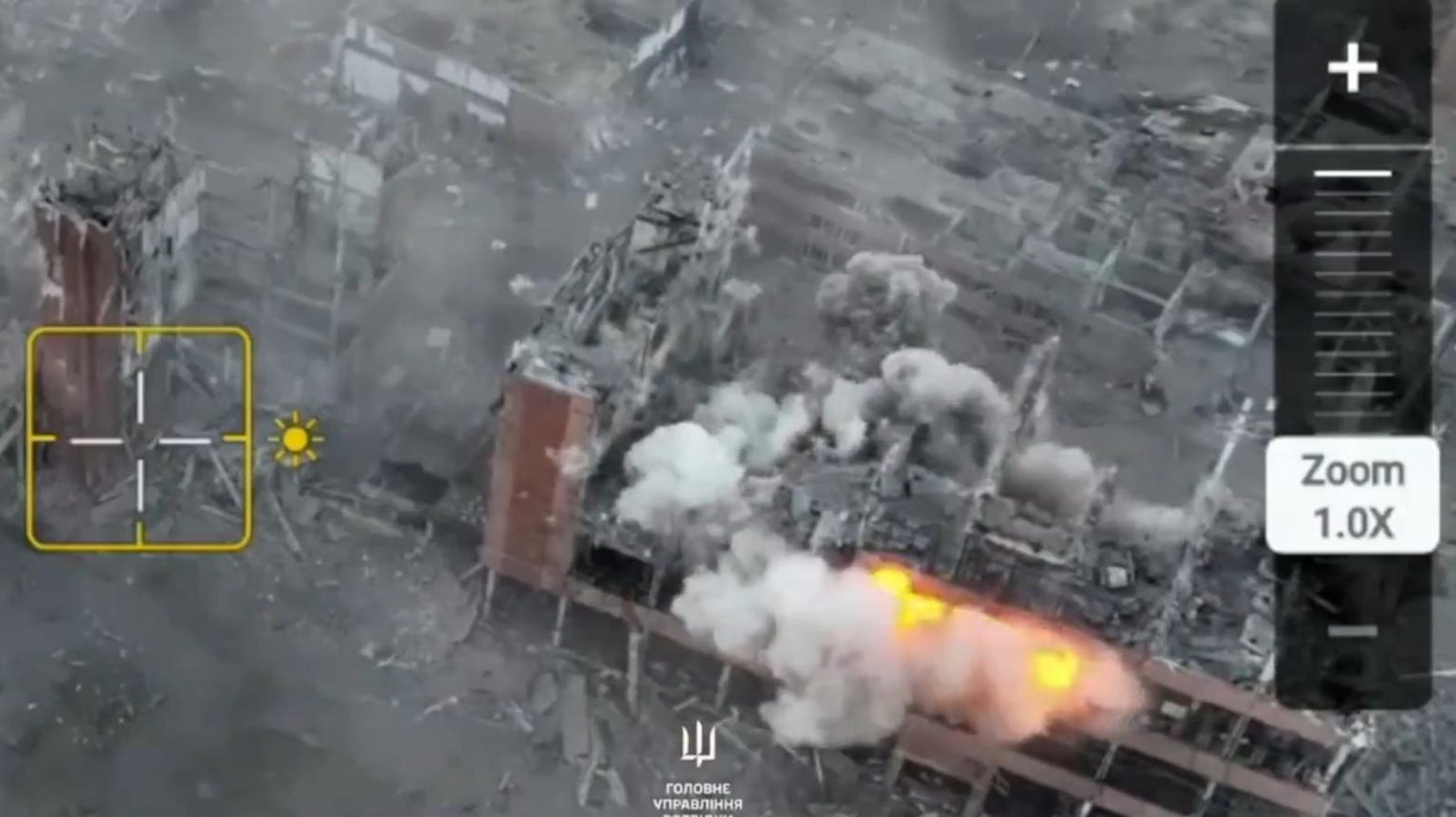On May 10, Russian troops surged across the Russia-Ukraine border north of the Ukrainian city of Kharkiv. Attacking south through sparse Ukrainian defenses, the Russians quickly occupied much of Vovchansk, a town with a pre-war population of 17,500 that lies just three miles from the border.
A month later, amid furious fighting in Vovchansk, Russian troops captured a key stronghold in the center of the increasingly devastated town: the PJSC Volchansky chemical aggregate plant, a sprawling complex of 30 tough concrete buildings.
The aggregate plant could’ve functioned as a kind of base covering Russian forces crossing the Vovcha River, just south of the plant. Instead, it became a trap. Ukrainian troops held the line just outside the plant and then counterattacked, advancing a few blocks north of the plant—and cutting it off from the main Russian force.
It took a grueling three months, but commandos from the Ukrainian intelligence directorate—also known by its acronym GUR—finally cleared the plant of the last Russian occupiers on Tuesday.
“The fighters of the GUR carried out a systematic sweep of the plant’s buildings, constantly engaging in contact battles with the enemy in densely built-up conditions,” the directorate announced. “In some cases, Ukrainian special forces engaged in hand-to-hand combat with the enemy.”
“The GUR completely liberated the territory of the Vovchansk aggregate plant and destroyed the occupiers in all the buildings of the enterprise,” the directorate added. Some Russians were killed; others were captured.
It’s unclear how many Russians were still alive in the plant at the time of its liberation. Early in the battle, there were reportedly hundreds of Russians spread across the 30 buildings—a daunting force. They enjoyed some fire support from Russian artillery staged to the north, and reportedly got some supplies delivered by small drones.
The Ukrainians dropped bombs, harassed the Russians in the plant with drones and snipers … and waited. For months, the aggregate plant was—according to Ukrainian analysis group Deep State—like a “shooting range” for the Ukrainians who could shoot at it at their leisure, and from all directions. “The Ukrainian armed forces took pleasure in destroying the occupiers,” Deep State noted.
As the Russian offensive in Vovchansk petered out this summer, Ukrainian counterattacks gradually pushed the front line in the town farther north, leaving the Russians in the chemical plant even more isolated than before.
The intelligence directorate waited until the surviving Russians were exhausted—and then assaulted the complex with at least four separate commando teams. They breached the plant and cleared it room by room in what the directorate described as “an extremely complex and successful operation.”
Liberating the PJSC Volchansky plant eliminates the admittedly small danger the Russians in the plant posed to Ukrainian forces advancing north into Russian-held Vovchansk. It’s also revenge for Ukrainian troops whose comrades have been on the other end of more than a few brutal urban sieges since Russia widened its war on Ukraine 31 months ago.
But it doesn’t mean the Ukrainians have turned the tide of the wider war. The fighting remains highly fluid as winter looms.
Ukrainian troops have invaded southern Russia’s Kursk Oblast along at least two axes, but Russian troops are still inching toward the eastern city of Pokrovsk—and are also threatening to surround the stubborn Ukrainian 72nd Mechanized Brigade in the eastern town of Vuhledar, once an impregnable fortress for the Ukrainians.
Read the full article here





